Will Gresson – 10 August, 2015
It's exciting to consider what the next Pavilion might look like given the resounding success of this year's project. At the time of writing, the rules for the 2017 Venice Biennale have just been released by Creative New Zealand, indicating that “the proposal must include artist(s) that are New Zealand citizens or permanent residents of New Zealand but can be based overseas,” but also adding that “proposals including international curators and/or collaborators will be considered.”
Venice
Simon Denny
Secret Power
Curated by Robert Leonard
9 May - 22 November 2015
There’s something mildly intimidating about writing about Simon Denny‘s exhibition Secret Power, New Zealand’s entry at the 56th Venice Biennale. Denny’s work has received an incredible amount of international press this year, with many publications and blogs (both arts and other media related) labelling it a highlight and including it on their ‘must see’ lists. The amount of positive critical press is no small thing, given that there are 89 different countries participating and over 40 collateral events in amongst all the other performances, talks, readings et al. taking place in Venice between May and November as part of the Biennale.
The element of the work which seems to have gained the most coverage in the media, both in New Zealand and internationally, concerns the link between Denny’s exhibition and the Edward Snowden leaks. Among other things, this information paints a graphic and troubling picture of New Zealand’s place in the Five Eyes intelligence gathering network, an arrangement that sees the country sharing a ‘club house’ with America, Canada, Australia and the United Kingdom, seemingly at the expense of New Zealand’s closer geographic allies in the Pacific. Similarly of note to international audiences is the way that Denny has used the work of David Darchicourt, a former NSA designer and ‘Creative Director of Defence Intelligence’ as the basis for so much of the work on display.
In New Zealand, this aspect of the exhibition appears to have been discussed frequently in relation to Nicky Hagar, whose book ‘Secret Power,’ published in 1996, explored much of the information that Snowden’s leaks later acknowledged. Hagar is rarely mentioned in overseas press however, his more recent notoriety in New Zealand having obscured the fact that he’s simply an advisor to the project based on his own extensive research into New Zealand’s surveillance activities.
The timely political tone of the exhibition however is augmented by the fact that what Denny has produced here is an incredibly intricate, well researched and site specific work of art in a more traditional sense. Part of appreciating this is understanding the significance of the Biblioteca Nazionale Marciana and the arrivals hall at Marco Polo Airport as two halves of the same Pavilion, and the framework provided by the city of Venice itself. The Marciana Library was once a symbol of the city’s power and status in the world, and holds an incredible wealth of texts, manuscripts, operas and more, including the last will of the explorer Marco Polo. This alongside its collection of maps cements it as a sight of intelligence gathering from a bygone era, something which is central to what Denny is doing with his work in the space.
The Library’s significance as a collection point and management site for information is juxtaposed with the Marco Polo Airport itself, the modern terminal having been completed in 2002. The importance of the September 11 attacks the previous year hovers over this timeline, necessitating the development of airports internationally as crucial points of intelligence gathering in the age of the ‘War on Terror’ (itself seen by many as the justification for the kind of far reaching, intrusive surveillance culture represented in different but interconnected ways by Darchicourt and Snowden). The ceiling of the library has been reversed, and printed onto the floor of the airport, suggesting that the foundations of these global intelligence and surveillance networks have a long history, particularly in the city of Venice. It also echoes Snowden’s intelligence leaks, taking the site of that endeavour and opening it up to the public, subverting its status and authority.
The way the interior of the Library is recreated in the arrivals hall is a kind of mirroring which is also evident in the two sides of the exhibit in the Library itself. On the one side are visual representations of the inner workings of the intelligence networks revealed in Edward Snowden’s leaked slides. These images hint at a culture not unlike contemporary internet culture, with avatars, memes and other informal visual signifiers and word play. On the other side of the Library is a collection of Darchicourt’s other commissioned work, including a large map of New Zealand which has the country upside down, front and centre. Surrounded by clichéd national symbols like Hobbits and the Sky Tower, red lines show underwater communication cables that form part of the link with the intelligence network detailed in Snowden’s files.
If anything, it’s the highly technical and specific basis for Denny’s work which may prove its shortcoming with some. In an event (at least nominally) dedicated to contemporary visual art, Secret Power is awash with technical references and in-jokes that are born of the very pervasive digital age we live in. Their somewhat jarring presence in amongst the otherwise sombre and serious information revealed by Snowden and embodied by Darchicourt’s designs is exactly the kind of thing Denny’s work illuminates, but it is easy to see how those not ‘in the know’ might find the work alienating in other ways. This could be true particularly for those who fail to see the connection between the work and the venue itself. It should be said that when I visited the exhibition, the staff member present was doing an incredible job of informing those who were curious to know more how the work fit with the space, and later told me privately that for them, the key to the work was understanding its site specificity.
It’s interesting to note that for all the positive press Denny’s exhibition has been receiving internationally, much of the New Zealand press has been typically detached and truculent. The visual focus on his work has tended to be on the Terminator skull featured in one of the cases (presumably because it’s the most obvious pop culture reference) and of course the ‘controversy’ over Nicky Hagar’s role as an advisor for part of the project. In reality, the visual recreations which form the bulk of the work in the vitrines (which are actually repurposed server racks) display a much wider array of images and objects, both comical and disturbing.
More predictably, some commentators have made the usual noise about Denny being based overseas. This was a major point of contention with Bill Culbert’s selection in 2013, a criticism which looked even more parochial when you consider that Germany’s Pavilion during the same event was actually housed in the French Pavilion, and featured four artists, only one of whom was German.
Looking at the positive critical response to Secret Power, you might be forgiven for thinking that this would finally be the year when it stops being such an issue for New Zealand to take part in the Biennale. Denny is a relatively young, increasingly visible artist who has taken part in several large scale exhibitions in the 12 months running up to Venice. His work has gained attention in a number of leading arts publications, and there’s no denying that his work is both timely and appropriate, not only to the overall mood of the 56th Venice Biennale, but also to the wider social and political zeitgeist to which the main curator and many of the other participating exhibitions have endeavoured to respond. Somehow though, the familiar dismissals have still managed to rear their heads in the local press, many from writers who have either no particular knowledge of the arts, or knowledge of Venice. Some have even come from people who haven’t attended the event, yet still feel qualified to talk about it ‘winding down.’
With that said, it’s exciting to consider what the next Pavilion might look like given the resounding success of this year’s project. At the time of writing, the rules for the 2017 Venice Biennale have just been released by Creative New Zealand, indicating that “the proposal must include artist(s) that are New Zealand citizens or permanent residents of New Zealand but can be based overseas,” but also adding that “proposals including international curators and/or collaborators will be considered.”
These changes seem to indicate a growing confidence in the continued success of New Zealand’s projects in Venice, and that a broader range of possibilities are now very feasible. If indeed this change does pave the way for future collaborations with international artists and curators, enabling more homegrown artists to further re-shape and re-contextualise New Zealand arts in an international setting, then we might be able to look forward to a more engaged series of discussions around future pavilions, with less of the limp controversy which has previously clouded the event.
Will Gresson
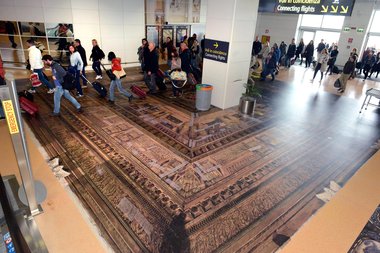
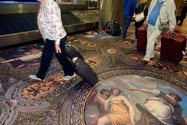
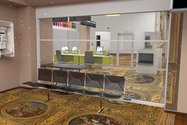
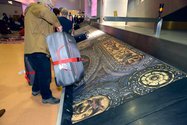
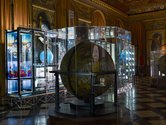




 Advertising in this column
Advertising in this column Two Rooms presents a program of residencies and projects
Two Rooms presents a program of residencies and projects
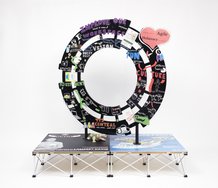

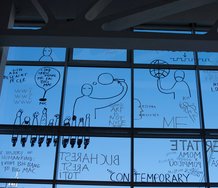
This Discussion has 0 comments.
Comment
Participate
Register to Participate.
Sign in
Sign in to an existing account.